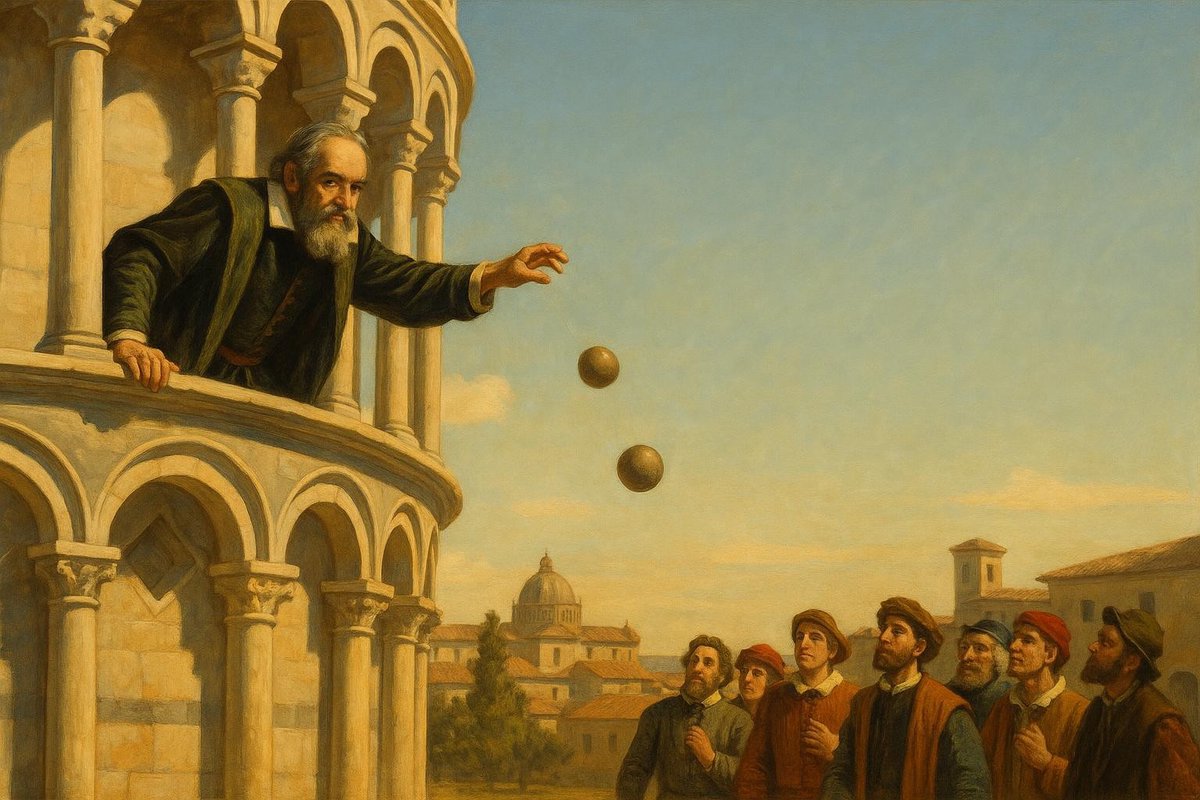
In the heart of Italy, amidst the rolling hills and timeless architecture, a curious question once echoed through the mind of a man who dared to challenge the norms: Do all objects fall at the same rate? Galileo Galilei, with his inquisitive spirit, sought to unravel this mystery using the most unconventional laboratory—the Leaning Tower of Pisa. This was not just an experiment; it was a bold step into a new world of understanding motion, where simple observations could defy long-held beliefs.
Hypothesis & Context: The Stage Before Galileo
Before Galileo’s time, many people believed in the Aristotelian idea that heavier objects fall faster than lighter ones. This notion, like an ancient tree with deep roots, had stood for centuries. But as time goes on, curiosity often nudges us to question even the most established truths.
- Aristotle’s influence: Weight determines the speed of a falling object.
- Renaissance: A period ripe for questioning and exploration.
- Galileo’s hypothesis: Objects fall at the same rate regardless of weight.
Interestingly, the Renaissance era, with its thirst for knowledge and exploration, was the perfect backdrop for Galileo’s revolutionary ideas. He wasn’t just a scientist working in isolation; he was part of a larger cultural movement that questioned everything from art to the cosmos. In this setting, Galileo’s quest to experiment rather than simply accept inherited wisdom was both radical and necessary.
Setup & Method: The Leaning Tower as a Laboratory
Picture this: a bright day in Pisa, with the sun casting long shadows across the piazza. Galileo, with keen eyes and steady hands, sets up his experiment atop the famed Leaning Tower. But what exactly did he do?
- Galileo drops two spheres of different weights simultaneously.
- Observers at the bottom of the tower watch keenly.
- Both spheres reach the ground at the same time.
Using simple tools—a pair of spheres and the power of observation—Galileo challenged the wisdom of ages. No elaborate equipment, just the mind of a man ready to see the world for what it was, not what it was assumed to be. The scene was a metaphorical bridge between ancient beliefs and modern science, where precision met curiosity under the Tuscan sky.
Results & Reactions: A World Turned Upside Down
When the spheres hit the ground, it was as if the echo shattered the silent acceptance of Aristotle’s teachings. Galileo’s experiment led to a simple yet profound conclusion: contrary to popular belief, objects fall at the same rate, regardless of their weight.
- Immediate reactions of astonishment and disbelief.
- Galileo’s findings spread, sparking debates across Europe.
- Challenging authority: The church’s initial resistance to Galileo’s methods.
This wasn’t just a scientific revelation; it was a cultural tremor. People began to question not only the physical world but the philosophical and theological frameworks that had long governed how they saw that world. Galileo was paving the way for a new era of scientific inquiry, where observation and evidence trumped doctrine and supposition.
Implications: The Dawn of Modern Physics
Galileo’s experiments were more than just fall tests; they were leaps into a future where math and physics began to dance in harmony. His work laid the groundwork for future scientists, including Newton, to develop a more comprehensive understanding of motion and gravity.
- Inspired Newton’s laws of motion and universal gravitation.
- Set the stage for methodical scientific inquiry.
- Galileo’s legacy: Bridging empirical evidence with mathematical reasoning.
No wonder Galileo is often called the ‘father of modern physics.’ By quantifying motion, he transformed science into a discipline of precision and predictability. His legacy teaches us that with curiosity and the courage to challenge the status quo, even the simplest observations can lead to monumental discoveries.
In wrapping up, Galileo’s journey from the Leaning Tower wasn’t just about understanding gravity—it was about demonstrating the power of observation and evidence over assumption. His legacy is a testament to the enduring human spirit to question, explore, and understand our world in ever-deeper ways.
Fuel Someone Else’s Curiosity
Feel inspired by Galileo’s pursuit? Share this story with a friend or discuss these ideas over coffee! You never know what new discoveries your curiosity might ignite. As Galileo himself might have said, “All truths are easy to understand once they are discovered; the point is to discover them.” Let’s keep the flame of curiosity burning bright!

Leave a Reply